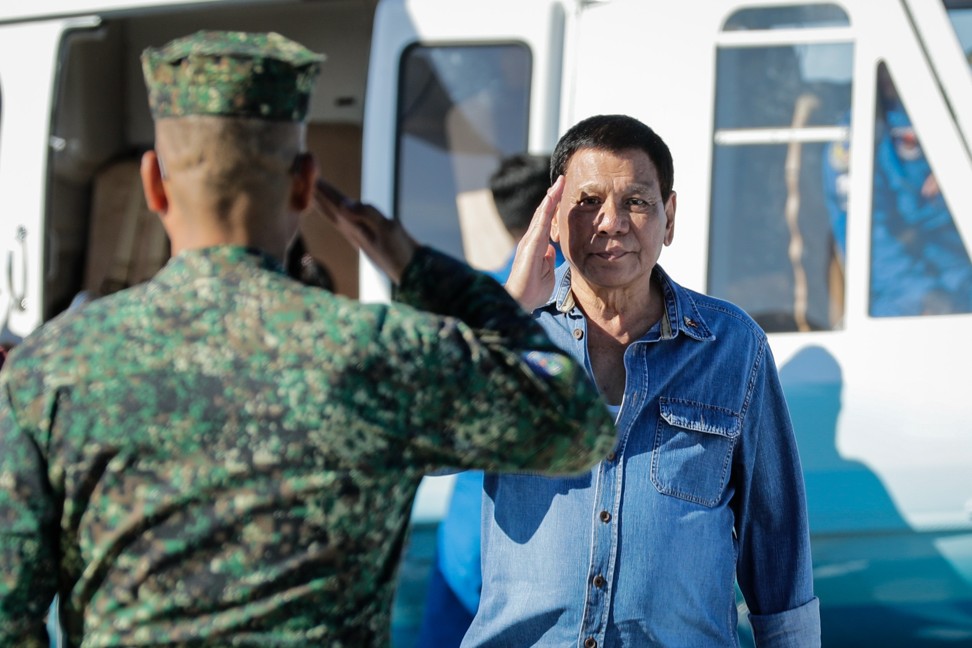
Philippines powerless to stop Beijing’s militarisation of South China Sea, President Duterte says
Rather than fight its giant neighbour, a better solution is to forge a joint exploration pact to harness the potential of the disputed waterway, leader says
Philippine President Rodrigo Duterte reiterated that he would not provoke China into a war following reports that the Chinese military landed long-range bombers on an airstrip in the disputed South China Sea.
“You know they have the planes, not stationed in Spratly [Islands] but near the provinces facing … Chinese provinces facing the Spratly and the China Sea. And with their hypersonic, they can reach Manila within seven to 10 minutes,” he said in a speech on Saturday in Cebu, according to a transcript released by his office on Sunday.
Facing criticism over his apparent inaction on China’s increased military activity in the South China Sea, Duterte questioned where his country would end up should war break out in the region.
“What will we arm ourselves with if there’s a war? Will we resort to slapping each other? I couldn’t even buy myself a rifle. It was given to me. So how will we even fight with the Chinese?” he said.
China is pitted against several smaller neighbours in multiple disputes over islands, coral reefs and lagoons in waters crucial for global commerce and rich in fish, and potential oil and gas reserves.
Duterte said there was no assurance that the US would remain on the side of the southeast Asian nation if war broke out.
A more feasible solution would be to forge a joint exploration pact with China to harness the disputed sea’s potential, he said.
Philippine Senator Panfilo Lacson on Saturday called on his country’s government to act on China’s militarisation of the disputed waters. The Philippines could seek the help of its allies to pressure Beijing to stop its military activities and could also insist on the UN arbitration ruling won by Manila in July 2016, he said.
China’s air force said late last week that several bombers, including its most advanced H-6K, had conducted take-off and landing training on an island reef in the South China Sea, without specifying which one.
The Pentagon criticised what it called China’s “continued militarisation” of island outposts in the waterway.
“The United States remains committed to a free and open Indo-Pacific,” Pentagon spokesman Marine Lieutenant Colonel Christopher Logan, said.
“We have seen these same reports and China’s continued militarisation of disputed features in the South China Sea only serves to raise tensions and destabilise the region.”
The Washington-based Asia Maritime Transparency Initiative, using Chinese social media posts, identified the location of the exercise as Woody Island, China’s largest base in the Paracel Islands, an archipelago also claimed by Vietnam and Taiwan.
With a combat radius of nearly 1,900 nautical miles (3,520km), the H-6K bomber would put all of Southeast Asia in its range from Woody Island, the AMTI said.
Further south in the Spratly group of islands, China has constructed seven man-made islands and equipped them with runways, hangers, radar and missile stations, further cementing its vast territorial claims in the region.
The US and other nations have accused Beijing of militarising the waterway to bolster its claims.
Additional reporting by Associated Press


